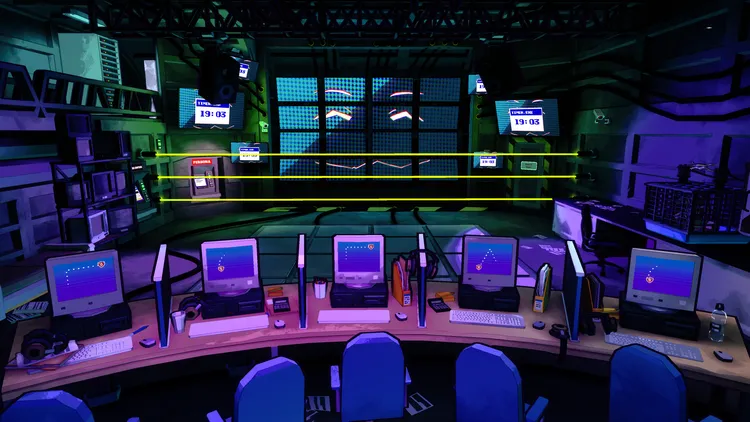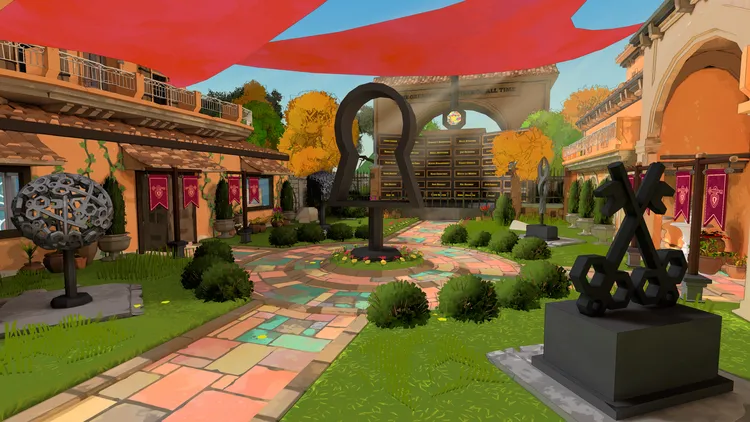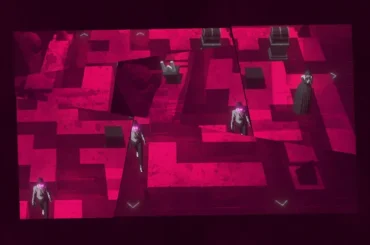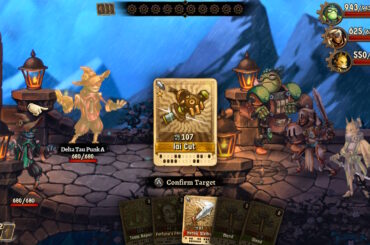Escape Academy follows the story of a young escape room enthusiast who embarks on a journey through a secretive school where the world’s top escape artists sharpen their skills by solving intricate puzzles. As you progress, you get to know the quirky students and professors who inhabit the academy, all while uncovering the school’s deeper mysteries.
The puzzles in Escape Academy are incredibly diverse, appealing to every corner of my problem-solving brain. From word and math challenges to logic puzzles, and even my least favorite—spatial reasoning—the game offers a little something for everyone. It aims to recreate the adrenaline-filled excitement of a physical escape room in a video game format, but what I enjoyed most was how it demanded an “analog” approach to solving its digital puzzles. This game got me fully engaged, both mentally and physically, in a way that most video games don’t. I found myself constantly scribbling notes, drawing maps, and muttering to myself as I worked through each puzzle.

This physical involvement felt immensely satisfying. It reminded me of one of my all-time favorites, Where in the World Is Carmen Sandiego?, where you had to use a real-world book to find answers and advance in the game. There was something magical about bridging the virtual and physical worlds. Escape Academy evokes a similar feeling—frantically jotting down notes, spinning maps, and working through puzzles felt like a form of mental and physical alchemy. For someone with ADHD like me, this level of immersion and focus is rare, and Escape Academy nailed it.
And when you solve a puzzle on your first try, despite doubting your answer? What a rush.
I would have liked a bit more of that thrill. The puzzles were well-designed but weren’t overly difficult. Each puzzle is rated on a scale of one to five keys, and most hovered around the two- or three-key range. Only one puzzle reached the full five-key difficulty. I get that the developers wanted to make the game accessible, but I would have appreciated more of a challenge.
The game also imposes a time limit for each puzzle. If you fail to finish within the time frame, you can extend the timer at the cost of a lower score. I only needed to use the extension twice, and the full five-key puzzle was the only one that required three retries. But finishing within the time limit didn’t make the puzzles feel too easy—it showed that the developers had carefully structured each puzzle. I never felt stuck or lost, which can often happen in other puzzle games that leave you randomly clicking around. Escape Academy smartly guides you from one step to the next, preventing frustration.
Beyond the puzzles, the game shines in its multiplayer mode and user interface. I played parts of it with my partner and was impressed by how smoothly multiplayer worked. You can switch between multiplayer and solo play without restarting, and you can share items with your partner—perfect if they’re quicker with calculations than you are. The UI also lets you pin items you collect to the screen for easy reference, like codes or ciphers. Although you can’t move where the items are pinned, which sometimes gets in the way, it’s still a handy feature.
As for the story, it’s fairly straightforward. It involves a long-lost puzzle professor and a school-wide conspiracy, culminating in a Portal-esque twist. While the plot is entertaining, the interactions with the professors are limited. The characters are cool and well-designed, but your conversations are shallow, often limited to a single line of dialogue. I would have loved deeper interactions with them.
My biggest complaint is that the game is too short. I completed it in about eight hours, and I could have easily played for another eight. I even sat through the credits hoping for a secret horde mode or bonus puzzles, but sadly, there was only a simple “thanks for playing” cipher. However, the good news is that developer Coin Crew Games has announced DLC coming this fall, so my craving for more puzzles will soon be satisfied.




